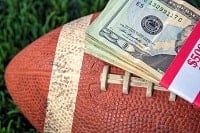To use this site you have to be over 18 or 19, if you live in Canada, depending on the law applicable to the province you live in. It is also recommended to check whether participation in online wagers is allowed, or not.

Further, this website presents several promotions and players see the optimum amount of what they can receive. However that does not mean that those amounts will be received by the player. How much a player receives depends on several factors, such as deposit amounts. Therefore it is advised that players read the terms and conditions of the operators beforehand.
